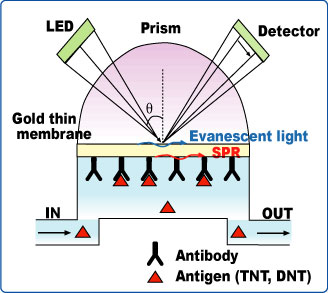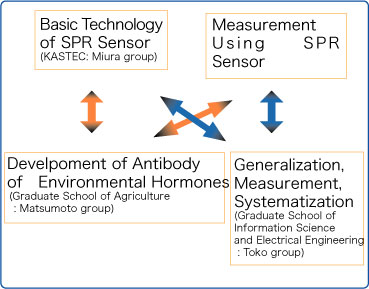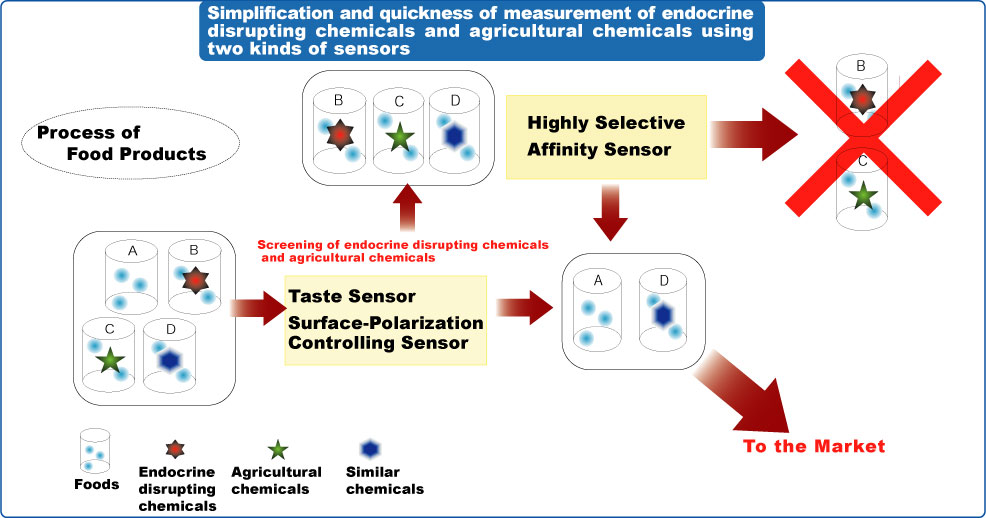 |
 |

|
Group Leader: Kiyoshi Toko
|
|
|
T
he purpose of this project is to develop a method to detect environmental hormones (endocrine disrupting chemicals) easily and quickly. The scheme for this purpose lies in two steps: the first is to quickly detect plausible substances, which might behave as environmental hormones, using a sensor with global selectivity and then the second is to identify them using an affinity sensor with high selectivity to the concerned molecule. Here the term "global selectivity" implies the ability to classify chemical substances into some groups with their properties. This kind of selectivity can be found in the sense of taste, where human beings detect chemical substances and then classify them into five taste qualities such as sourness, sweetness and umami taste.
We succeeded in highly sensitive detection of environmental hormones: 0.1 ppb benzo(a)pyrene, 3 ppb dibutyl phthalic acid, and 5 ppb 2,4-dichlorophenol. The used methods are an SPR (surface plasmon resonance) sensor with antigen-antibody reactions and a surface-polarization controlling method. |
 |
| The taste sensor is now sold by Intelligent Sensor Technology, Inc., which is a venture company built two years ago, and is used in food or pharmaceutical companies, research institutes and universities in Japan. This sensor can measure the taste felt by humans. One of the applications of this project is to develop an electronic dog nose, which can detect landmines buried in the soil using the above SPR sensor. The landmine elicits a tiny amount of explosive substances such as trinitrophenol. So, expert dogs can detect the landmine by their nose. We are now developing a highly sensitive smell sensor for landmines instead of dogs. Development of these kinds of intelligent sensors will contribute to a peaceful, happy world. |
 |
 |
|
 |
 |